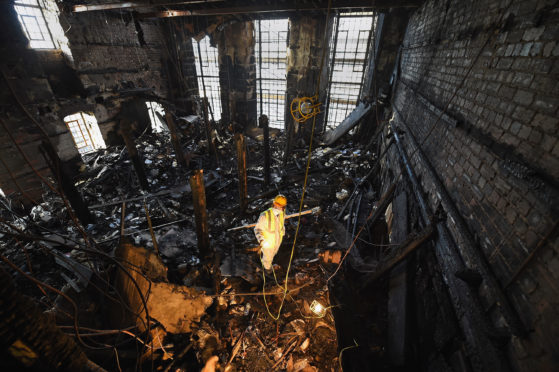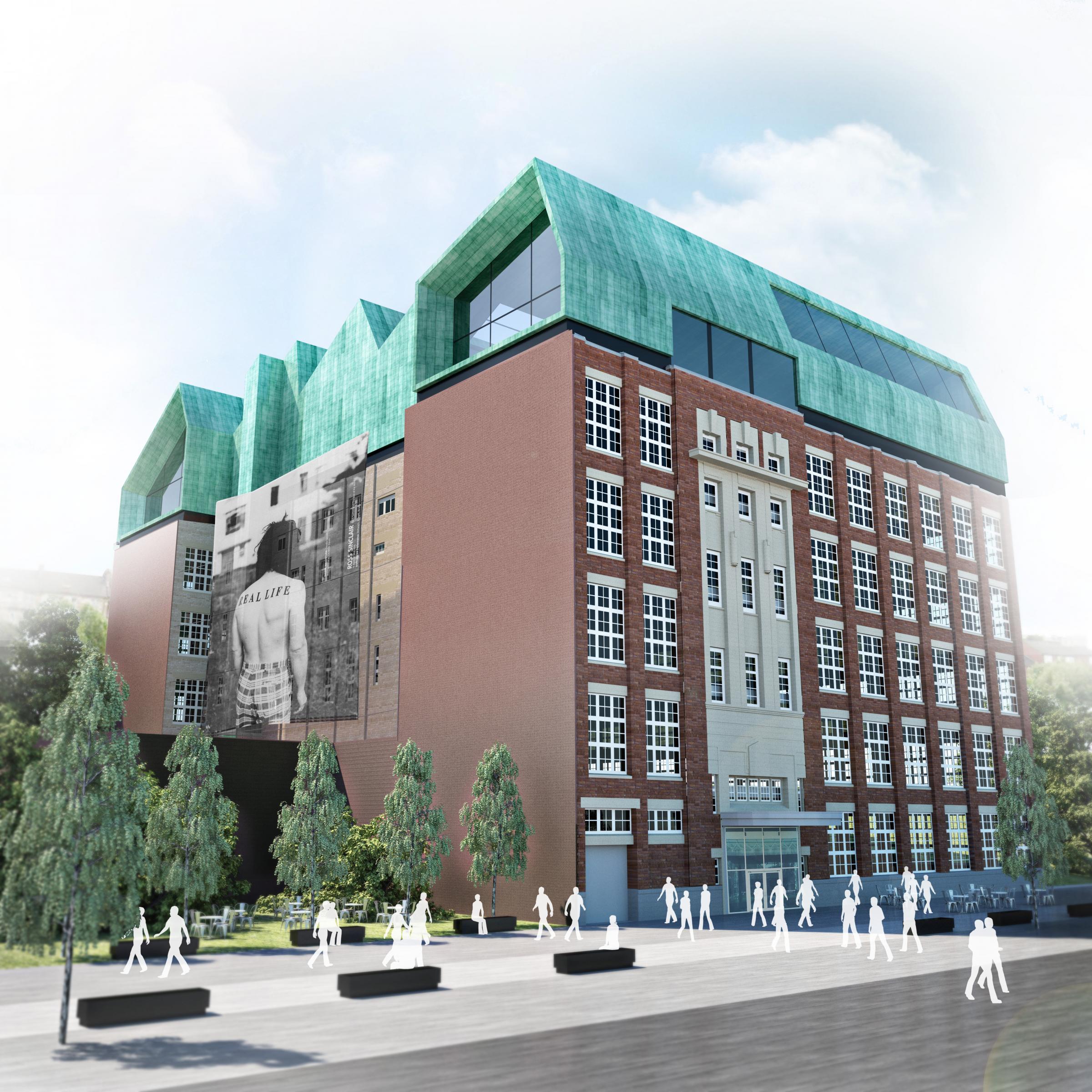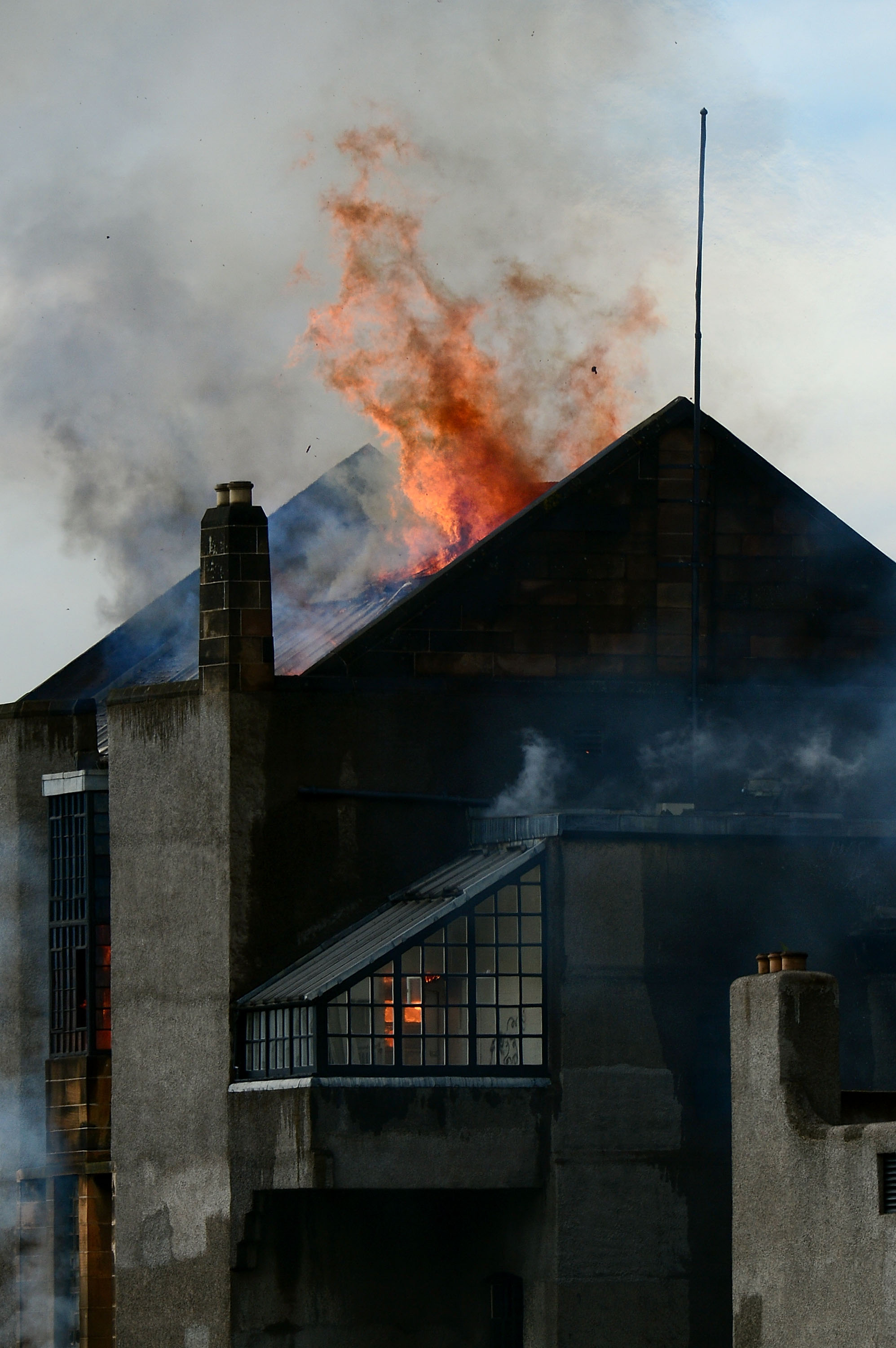
An international appeal that raised £20 million to rebuild Glasgow School of Art after a devastating fire is under scrutiny after it emerged insurance payouts covered the restoration work.
Insurers paid out more than £50m to rebuild the world-famous Mackintosh building after the blaze in 2014 destroyed the iconic architectural masterpiece, we can reveal.
Politicians yesterday demanded a public inquiry to establish how millions of pounds donated by the public to rebuild the world-famous building was spent by Glasgow School of Art (GSA), which launched ambitious expansion plans two years after the fire.
Senior sources say the art school failed to make clear where the donations were being spent and that cash given to rebuild the Mackintosh was, in fact, spent on purchasing new buildings and renovating parts of the building, known as The Mack, untouched by the fire.
Black ties in the Big Apple and spectacular auctions raised millions, but did any of it help rebuild The Mack? – click here to read more
One former senior member of staff said: “Donors were led to believe they were helping to rebuild The Mack but the insurance covered that. Between the insurance payouts and the donations, there was a huge surplus and that was diverted to finance wider campus growth.
“The management and governors were obsessed with growing student numbers and expanding the estate.
“The pictures of the devastation were very emotive and there was widespread sympathy for the Mackintosh building after the 2014 fire. People gave millions of pounds to help.
“There is certainly a feeling that the board and management did not do enough to dispel the idea that public donations were needed to rebuild The Mack. Some would suggest they did nothing at all to dispel that idea. Others would, in fact, say they encouraged it.
“That was the reason that so many people gave money. They believed their donations were needed to rebuild the Mack. They weren’t.
“If they felt it was appropriate to take the money specifically given to rebuild the Mackintosh building and spend it on other projects then they should have said so and asked every donor if they were happy with that or wanted their money back? That did not happen.”
The 110-year-old Charles Rennie Mackintosh building was badly damaged in a fire in May 2014, with about 10% of the building destroyed, including the famous wood-panelled library in the west wing, and a third of its contents.
Despite insurance policies being in place, GSA launched a star-studded appeal led by Mackintosh admirer Brad Pitt and Doctor Who star Peter Capaldi, a former student, to raise £20m less than a month after the fire.
At the time, Capaldi said he hoped funds could be raised to restore the Mackintosh building “to its former grace”, while then GSA director Tom Inns promised the appeal would help return the building to “its former glory”. The Scottish and UK governments promised £5m each to restore The Mack and Chancellor George Osborne pledged a further £5m for a graduate and research centre.
In October 2014, Tom Inns and other GSA senior staff flew to Venice to attend a conference of architectural experts to discuss the restoration of the Mackintosh library.
Despite the fire, GSA wanted to increase the number of its students by 25% but, according to board minutes, were “constrained in terms of the size and condition of some of the estate”.
In April 2016, a £32m Mackintosh Campus Appeal was launched, which now included restoring the west wing of the building, upgrading the unaffected east wing, buying Stow College and developing a studio and workshop space there.
Tom Inns said at the time: “The Mackintosh building fire required the school to pause and reconsider, but we are now moving forward to create a newly extended campus with the restored Mackintosh building at its heart.”
The art school bought the disused Stow College for £6m and spent another £8m on refitting it.
The campus trust absorbed the £17m left from the fundraising appeal and insurance payouts.
The art school’s accounts show it has received a total of £52.5m in insurance for the first fire. According to the accounts, the amount spent on restoring The Mack by January 2018 – five months before the second, more devastating fire – was £46.6m.
At that point, the school was budgeting in a £2.1m contingency fund and £13m “business interruption costs”, bringing the maximum possible spend on The Mack to £62m. But a second fire destroyed the refurbished building last June.
Holyrood’s culture committee has already called for a public inquiry into the two fires and politicians yesterday said it must now include how the appeal funds were used.
Glasgow North East MP Paul Sweeney said: “There was a real sense after the 2014 fire that Glasgow had been robbed of a part of its soul.
“I think it was reasonable to expect any donation would go directly to restoring the building after the damage had been contained so expertly by the firefighters to the west wing. If the intended purpose of the fund changed, that is unacceptable.”
He added: “It is important the facts around this whole situation are established and I agree with the idea of a public inquiry whose remit includes how the building and the institution has been managed.”
Glasgow MSP Adam Tomkins said: “The more one hears about the school of art and how it was managed, the more pressing the case for a full public inquiry into the future of the Mackintosh building.
“My view is there are, at best, grave doubts about the capacity of the current management of the school of art to be the custodians of one of Scotland’s national treasures.”
Glasgow Kelvin MSP Sandra White said: “A public inquiry needs to look at every single part of the funding.
“People who have put up their own money have said to me they will absolutely not be putting up any more. We need a public inquiry to look at where the monies have gone and who made the decisions. It is shrouded in secrecy as far as I can see.”
The school’s continuing appeals for cash continued to focus on repairing the fire damage even after the insurance money was received. Wealthy supporters were invited to an “evening of cocktails, fine food and wine” at an exclusive New York restaurant, where tables of 10 cost £3,500, with the money raised “helping the GSA recover from the almost catastrophic fire in its iconic and beautiful Mackintosh building”.
A Christie’s auction of works by 25 leading artists, which raised over £700,000, was also intended to “raise funds and publicity for the rebuilding of the school” while a letter to donors says their money would “help the GSA to recover from the effects of the fire in the Mackintosh building”.
Yesterday, Glasgow Art School said: “The trustees launched an appeal in the aftermath of the 2014 fire with the purpose of raising funds to enable the Glasgow School of Art to recover from the consequences of the fire.
“In 2016 the Mackintosh Campus Appeal was introduced. This was a reflection of the fact that what the school needed to recover from the fire had become clearer.
“The recovery plan included the restoration and upgrade of the Mackintosh building – returning it to its original academic configuration as a home for all first year students – and the acquisition of the Stow building creating studio space for the School of Fine Art.”
The ethics: Experts say donors need to be given the choice
Fundraising experts yesterday said good practice meant that donors should be told if the goals of an appeal have changed.
Gerald Oppenheim, chief executive of the Fundraising Regulator, said people should be given the chance to reclaim their donation if the money is being used for another purpose.
He said: “Any charity running an appeal for a specific purpose is setting up a restricted fund into which donations are made.
“If the purpose changes the charity needs to let donors know and give them the chance to recover their donation if they do not want to support the new project.
“The Code of Fundraising Practice underpins the behaviours we expect from fundraisers and organisations across our sector – it is it vital charities adhere to the code to ensure their fundraising activity is ethical.”
Fundraising consultant John Abbey, managing director of Abbey Solutions International, said: “If someone donates money to a cause for a specific project, then the money needs to be spent on that specific project. Otherwise, you give it back.
“Or you ask them, ‘Can we now use the money for X ,Y and Z?’ If they say yes, then great, but if they say no, you give the money back.
“It is important the donor, whether it’s Mrs Brown giving £10 or a major foundation giving £10,000, knows where the money is going.”
The Sunday Post View: Art school bosses risked more than a building. They risked our trust – click here to read more

Enjoy the convenience of having The Sunday Post delivered as a digital ePaper straight to your smartphone, tablet or computer.
Subscribe for only £5.49 a month and enjoy all the benefits of the printed paper as a digital replica.
Subscribe
 © Jeff J Mitchell/Getty Images
© Jeff J Mitchell/Getty Images